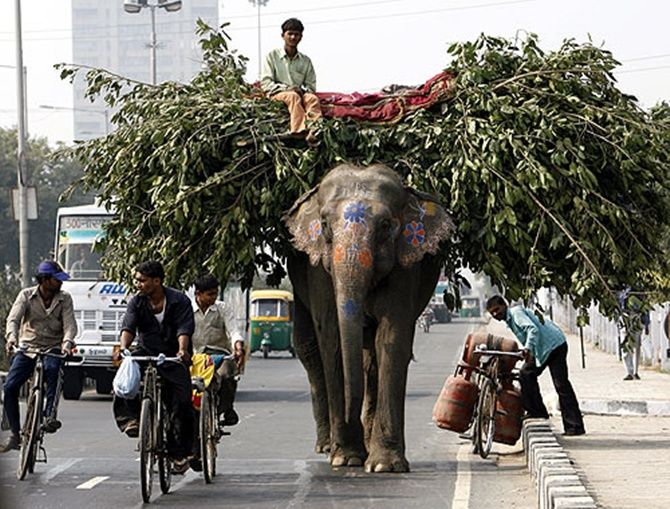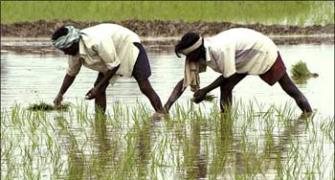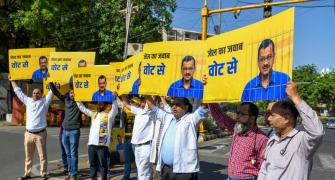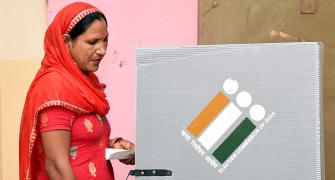 At the outset, it might seem that investment in fixed plant and machinery (FPM), taken as a proxy for overall investment, is in doldrums. It fell in the first quarter of 2014-15, compared to the fourth quarter of 2013-14.
At the outset, it might seem that investment in fixed plant and machinery (FPM), taken as a proxy for overall investment, is in doldrums. It fell in the first quarter of 2014-15, compared to the fourth quarter of 2013-14.
However, a deeper analysis into the latest official data shows that investment is, in fact, showing signs of a moderate pick-up.
In the latest gross domestic product numbers, gross fixed capital formation (GFCF) or investment in FPM declined by 6.2 per cent to Rs 8.1 lakh crore or Rs 8.1 trillion (without adjusting for inflation numbers) in the first quarter of 2014-15 against Rs 8.7 lakh crore or Rs 8.7 trillion in the fourth quarter of 2013-14.
This might surprise, as figures in current prices should show at least some growth.
However, investment in FPM generally declines in this period.
The first quarter is a slack season, while the fourth quarter of a preceding year is a busy one, note YES Bank analysts.
For instance, in the first quarter of 2013-14, GFCF fell 13.8 per cent to Rs 7.3 lakh crore (Rs 7.3 trillion) compared to Rs 8.5 lakh crore (Rs 8.5 trillion) in the fourth quarter of 2012-13.
A year before, GFCF contracted 7.3 per cent to Rs 7.11 lakh crore (Rs 7.11 trillion) in the first quarter of 2012-13 against the fourth quarter of 2011-12.
Seen this way, contraction in investment came down in the first quarter of 2014-15 sequentially, compared to the previous two years.
For those who say that the figures should be taken at constant prices, to adjust for inflation, the trend remains the same. GFCF at constant prices declined 7.4 per cent in the first quarter of 2014-15 sequentially, 14.3 per cent a year before and 8.9 per cent in the first quarter of 2012-13 sequentially.
To track actual movement in investment, seasonality is taken out. For that, growth is calculated year-on-year. Applying this method showed investment in FPM rose 11.2 per cent in the first quarter of this financial year (without adjusting for inflation) against 2.2 per cent in the fourth quarter of 2013-14.
If one adjusts for inflation, this investment rose seven per cent in the first quarter of 2014-15, against a contraction of 0.85 per cent in the fourth quarter.
“I think investment has already started to pick up,” said National Statistical Commission chairman Pronab Sen. However, it would take a bit more time to see robust growth, he said.
The government has started clearing projects after formation of the Cabinet Committee on Investment (CCI) but it takes time for investments to gather steam.
“Typically, once projects are stuck, funding agreements cease to exist. Then you go for new arrangements, once projects are cleared,” he said.
According to the Project Monitoring Group, set up to monitor delayed projects and remove investment bottlenecks therein, the body has facilitated resolution of all issues in 178 stalled projects worth Rs 6.5 lakh crore (Rs 6.5 trillion) so far.
Besides, contraction in GFCF in the first quarter of 2014-15 against the fourth quarter of 2013-14 (at current prices) was accompanied by reduction in inventories to Rs 48,000 crore (Rs 480 billion) from Rs 50,000 crore (Rs 500 billion) over this period. This means businesses are clearing their inventories before putting in money for fresh investments, analysts said.
In the second quarter, inventories might again build up. “A quarter ahead of the festival season sees inventories building up and quarters subsequent to festivals would see inventories going down,” says Sen.
Soumya Kanti Ghosh, chief economist with State Bank of India, said investments have been moderately picking up because of two effects. “First, the government is clearing projects but it is taking time to be felt on ground due to the long gestation period of projects,” he explained. Second, he said, consumption is gradually rising. “If it could be sustained, then discretionary spending will increase, which will push up investments from October onwards. Decline in inventories is a positive side but it is limited so far,” he said.
To buttress his point, Ghosh said both passenger car sales and two-wheeler sales were up in July. Car sales rose five per cent and those of two-wheelers by 13.7 per cent, year-on-year.

Photograph: Desmond Boyland/Reuters










